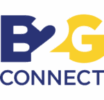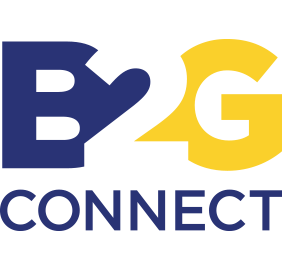How New Businesses Can Get on the GSA Schedule.
Yes, Even If You’re Just Getting Started)
Breaking into the government marketplace can feel like an insiders-only club, especially if your company is new.
The good news: the GSA has built real on-ramps for younger firms, and with a little planning, you can compete faster than you think.
This quick guide walks you through the Startup Springboard pathway, other practical routes to early wins, and the “be-ready” stack every new vendor should line up.
Ready To Win Contracts?
Talk To One Of Our Specialist!
First Things First: What a GSA Schedule Actually Does For Your Business
The GSA Multiple Award Schedule (MAS), also known as the Federal Supply Schedule (FSS) or GSA Schedule Contract, is one of the most potent vehicles for doing business consistently with government buyers.
It’s essentially a long-term, governmentwide contract administered by the U.S. General Services Administration that pre-negotiates your company’s pricing, terms, and conditions. Once approved, any federal, state, or local agency that uses GSA purchasing systems can buy from you without going through a lengthy bid process.
Instead of competing on every single opportunity from scratch, your business becomes a pre-approved vendor, already vetted for fair pricing, financial responsibility, and past performance.
Buyers can simply search for your products or services in GSA eLibrary or GSA Advantage!, add you to their procurement plans, and issue task orders or Blanket Purchase Agreements (BPAs) directly. This means faster awards, less red tape, and greater visibility across the public sector marketplace.
It’s important to understand, however, that a GSA Schedule doesn’t guarantee sales. Think of it as a powerful license to hunt rather than an automatic revenue stream.
The most successful Schedule holders are those who actively market themselves to contracting officers, promote their listings, and maintain compliance with GSA’s reporting and pricing requirements.
Historically, to qualify for a GSA Schedule, companies needed to show:
- At least two years in business,
- Two years of financial statements demonstrating stability, and
- Documented past performance from previous commercial or government contracts.
This requirement often discouraged startups or newer small businesses from applying—until GSA recognized the need to attract more innovation, agility, and diversity into the federal supply chain.
To solve this, GSA created the Startup Springboard Program. This special pathway allows new and emerging businesses to bypass the traditional two-year requirement if they can demonstrate capability through other means. Instead of being judged strictly by corporate age or balance sheets, applicants can substitute alternative evidence, such as:
- The experience and qualifications of key personnel,
- Past performance from parent or affiliate companies, Commercial invoices, or contracts that prove operational capacity, and
- Letters of reference or proof of industry partnerships that establish reliability.
This approach opens the door for innovative firms, especially tech startups, consulting agencies, and service providers, to enter the federal marketplace much sooner.
Through Startup Springboard, GSA is actively encouraging emerging businesses to join the MAS program, helping to modernize the government’s supplier base and promote competition.
Pathway #1: GSA’s Startup Springboard (the fast on-ramp for newer firms)
What it is. Startup Springboard lets companies with fewer than two years of corporate history (or without full financials) submit a MAS offer by substituting other evidence of capability. Think: the experience of your key personnel, affiliated company performance, or strong commercial sales, even if the LLC itself is new.
Who qualifies. You may qualify if:
- Your company is less than two years old, or you’ve been around longer but don’t yet have two years in your offering’s specific line of business.
- You can document equivalent capability (i.e., resumes of key staff, affiliate past performance, commercial sales proof). GSA’s MAS roadmap details what can be substituted when financials are thin.
Why it matters. Instead of waiting to “age into” eligibility, Springboard can accelerate your timeline so you can get on contract, list your catalog on GSA Advantage!/eLibrary, and begin marketing to federal, state, local, and tribal buyers who purchase through MAS.
Pro tip: Springboard is administered under the consolidated MAS, but certain speed-to-award programs (like FASt Lane) are specific to the IT Large Category. If you sell IT, consider pairing Springboard eligibility with FASt Lane to accelerate review of your offer or later mods.
Download Your Copy of The Ultimate Guide To The GSA Schedule for 2026 Today!
Pathway #2: FASt Lane (for IT sellers)
If you’re in the IT Large Category, GSA’s FASt Lane program can significantly shorten processing times for new offers and modifications, giving agencies faster access to emerging tech and giving you speed to market.
While it’s not a substitute for eligibility, it’s a powerful complement once your offer is ready.
Pathway #3: Be a Reseller, Dealer, or Leverage a Letter of Supply
If you’re a product company without a deep manufacturing history, you can participate as a reseller or authorized dealer, but the paperwork matters.
GSA’s required templates include a Letter of Supply (LOS) from your manufacturer, or in some cases, verification via the Verified Products Portal (VPP). The LOS must meet specific content and signature requirements, and the PCO must approve dealers added to a contract.
This can be a smart entry point for newer firms that have strong supplier relationships but limited corporate history.
Don't Wait...Win.
Let's Make This Happen!
Pathway #4: Team with Other MAS Contractors (CTAs)
Contractor Team Arrangements (CTAs) let two or more MAS holders combine their SINs, labor categories, and products to deliver a total solution under one task order, useful if you’re strong in one area but need a partner to round out the scope.
GSA’s updated CTA guidance clarifies the structure, documentation, and small-business considerations, such as socio-economic status alignment for set-asides and limitations on subcontracting.
Industry primers make a helpful companion read and emphasize the difference between a CTA and a prime-sub relationship (in a CTA, each contractor has privity with the government for its portion).
Pathway #5: Subcontract First, Prime Later
If your near-term goal is revenue and past performance, subcontracting to a prime can be faster than winning your first prime task order. GSA maintains guidance and directories to help small businesses find prime partners, and large primes over certain thresholds are required to subcontract. Subcontracting builds credibility you can roll into your MAS offer or later task bids.
Pathway #6: Start as a Partner to a GSA Reseller
Some newer vendors pilot federal sales by partnering with an established reseller that already holds a MAS contract.
You can gain channel access with lighter lift while you build your own pipeline and performance history, though you’ll work under the reseller’s compliance framework and margins. Industry advisories outline pros/cons and minimum sales obligations if/when you pursue your own contract later, so be on the lookout for that.
Ready To Win Contracts?
Talk To One Of Our Specialist!
What “Ready” Looks Like for New GSA Sellers
Getting on Schedule is step one. Actually winning orders requires looking buttoned-up across every system buyers use to find you.
1) Get SAM Registered (UEI + active registration)
No active SAM, no awards = no Government business for you. Register your entity at SAM.gov, obtain your Unique Entity ID (UEI), and keep your registration active and accurate. SAM’s official entity registration hub provides the current checklist and step-by-step.
2) Complete and optimize your SBA Small Business Search (formerly DSBS) profile
SBA’s Dynamic Small Business Search is now the Small Business Search (SBS). Many contracting officers (and primes) start market research here. Make sure your profile is complete, keyword-rich, aligned to your NAICS/SINs, and linked to your capability statement.
What to include:
- NAICS codes and keywords that match how buyers search
- Past performance (commercial is OK—be specific)
- Core differentiators and socio-economic statuses
- Clear POC info and geographies you serve
3) Build a sharp, one-page Capability Statement
Think of this as your federal resume + sell sheet. GSA’s OSDBU trainings define it plainly: a marketing statement that advertises who you are, what you do, and why you’re low-risk to hire. Keep it to one page, keep the logo/header consistent with your brand, and align it with your MAS SINs. Include:
- Core competencies (mirrored to customer language)
- Differentiators (evidence-based, not platitudes)
- Past performance snapshots (commercial/federal)
- NAICS codes, UEI, CAGE, and socio-economic statuses
- Contact block + QR or link to your GSA catalog page (once awarded)
For structure and examples, check out our page here.
Don't Wait...Win.
Let's Make This Happen!
A Practical Timeline for a New Company
- Assess eligibility & pick your lane.
If you’re under two years old, map your evidence for Startup Springboard (key staff résumés, affiliate experience, commercial invoices, references). IT sellers: check FASt Lane eligibility. Product sellers: confirm VPP/LOS path and supplier commitments. - Be ready to go.
Get the UEI and complete your SAM Registration; build out your SBS/DSBS profile; draft the one-page capability statement; align NAICS/SINs to the MAS solicitation you’ll pursue. - Submit your MAS offer (via Springboard if applicable).
Use GSA’s MAS Roadmap and required templates; explain any thin financials and substitute allowed documentation per Springboard guidance. - Parallel path to early revenue.
While your offer is in review, pursue subcontracting, CTA partnerships, or reseller routes to build past performance and relationships you can point to on day one of award.
Post-award, market like a hawk.
Update your capability statement with contract details, sync your catalog on GSA Advantage!/eLibrary, and reach out to program offices and OSDBUs with a short intro + capability statement + SBS link. (GSA ITC also offers scope reviews and other buyer-seller support resources.) (U.S. General Services Administration)
The “Be-Ready” Checklist
- SAM registration active; UEI verified; bank/TIN data clean. (SAM.gov)
- SBS (formerly DSBS) profile complete with strong keywords; link your capability statement.
- Capability Statement: one page, crisp, metrics-driven, aligned to your SINs.
- Pricing & compliance evidence assembled (commercial price lists, invoices, T&Cs).
Download Your Copy of The Ultimate Guide To The GSA Schedule for 2026 Today!
Final Thoughts
New companies can get on the GSA Schedule. The Startup Springboard pathway is tailor-made for younger firms, FASt Lane helps IT sellers move faster, and teaming/subcontracting/reseller strategies build momentum while your offer works through review.
Just remember: awards go to vendors who look ready: SAM active, SBS polished, and a capability statement that proves you’re low-risk and high-value.
Line up those pieces, and you’ll enter the market with credibility from day one.
We know how complicated this can all sound. That’s why we founded our business in the first place: to help companies just like yours be ready to generate income from Government spending.
Let B2G Connect get you on the GSA Schedule today!
Start Today!
Marketing your business to the government can be complex and highly competitive.
That’s where we come in...at B2G Connect, our team of experts are there for every step of the complicated process.
Call Us Today At (727) 615-4929
